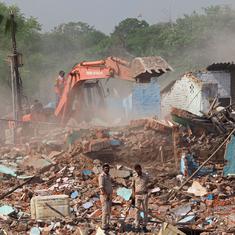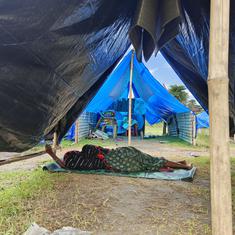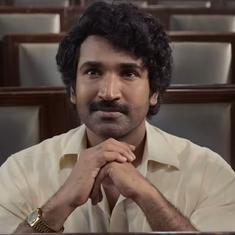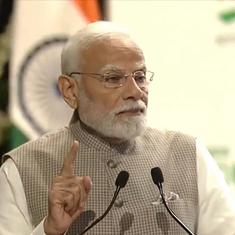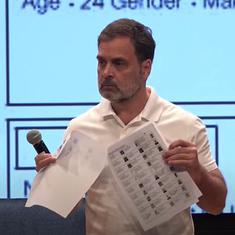On Wednesday night, the government finally arrested Sant Rampal, a cult leader who had been holed up in his ashram in Hisar, Haryana, defying the authorities. The last few days of Indian television have been dominated by sights of Rampal’s fervent supporters clashing with authorities outside the ashram, barely three and a half hours away from Delhi. At least six people – including an 18-month-old child – have died and many more have been injured in the violent standoff, as Rampal attempted to avoid appearing in court on charges of murder dating back to 2006.
The visuals were reminiscent of other famous religious standoffs, from Operation Blue Star in 1984 which was aimed at flushing Sikh militants out of Amritsar’s Golden Temple to the horrific Waco siege in Texas in 1993, when 76 people were killed after a fire broke out at the campus of a fringe religious group suspected of weapons violations. In Hisar, too, supporters chucked petrol bombs and traded fire with authorities, who in turn have claimed that women and children were being used as shields.
Other than a general sense of law and order breaking down easier in Haryana than most other states, the question that usually comes up in situations like this: how did it come to this? How could a cult leader be running a little fief of his own so close to New Delhi?
*Religious fervour
One answer is simple and obvious: religion. Faith is always a tricky subject to navigate in Indian culture and cult leaders, from Sai Baba to Asaram Bapu, make everything much trickier for law enforcement.
Taking on a campus filled with supporters of such a leader who see him as divine is not the same as invading the headquarters of a criminal gang. In this case, those standing in the way were willing to go much further in an attempt to stave off the authorities, whether that meant self-immolation or essentially going to war with the police. Their reaction was serious enough to prompt police to step back after an attempted invasion of the ashram on Tuesday when they were unable to locate the cult leader.
And this isn’t just an Indian problem. One of the chief criticisms of the handling of the Waco incident was their inability to understand how exactly to deal with a doomsday cult leader.
“To the F.B.I. agent, Mount Carmel was a hostage situation, and the purpose of the “negotiation” was to get the man behind the barricade to release some of his captives,” wrote Malcolm Gladwell in a piece looking back at the Waco incident. “But Koresh saw his followers as his students. They were there of their own free will, to learn the prophecies of Revelation. How could he release people whom he was not holding in the first place?”
*Police, not army
It’s often said that if the government really wanted to end India’s left-wing militancy problem, all they would have to do would be to send the army in. India’s military has more than enough firepower and competency that the issue would be solved within months if not weeks. But it could potentially create as many problems as it would fix.
Armies are meant to be used against enemies. Against your own citizens, you use police and paramilitary forces, who are trained to do different things. Hence the issues that those in India’s periphery, Kashmir and the Northeast, have with the centre’s approach, but this is one of those reasons that a standoff like this can drag on.
The government might have sent 14 Central Reserve Police Force companies to Hisar to help handle the situation at Rampal’s ashram, but their task is not to invade with shock and awe. It was apprehend the cult leader to ensure his court appearance with, as expressly instructed by the High Court, “as little bloodshed as possible”.
*Martyrs and backlash
Three years ago, a large yoga meet in the middle of the capital was suddenly broken up by the Delhi Police. Around midnight, the cops raided a large camp where thousands of followers of Baba Ramdev had gathered for a three-day event, featuring plenty of yoga as well as political posturing.
The sudden raid by the police, including lathi charge on thousands of sleeping supporters which led to the death of one woman, was widely criticised as a sign of the trust deficit between those governing and those governed as well as an example of excess force. A similar situation came up when the head of the Dera Sacha Sauda cult had to be arrested in 2007.
While that may have been a different government and a more prominent leader, the memory is still reasonably fresh. Indeed, the incident earned much criticism from those who are currently in charge both in Haryana and at the centre. Moreover, the midnight raid was one of the many incidents that built up an image of the previous government’s inability to relate to the people – something the new Bharatiya Janata Party administration would not want to risk, after forming the government in Haryana for the very first time.
